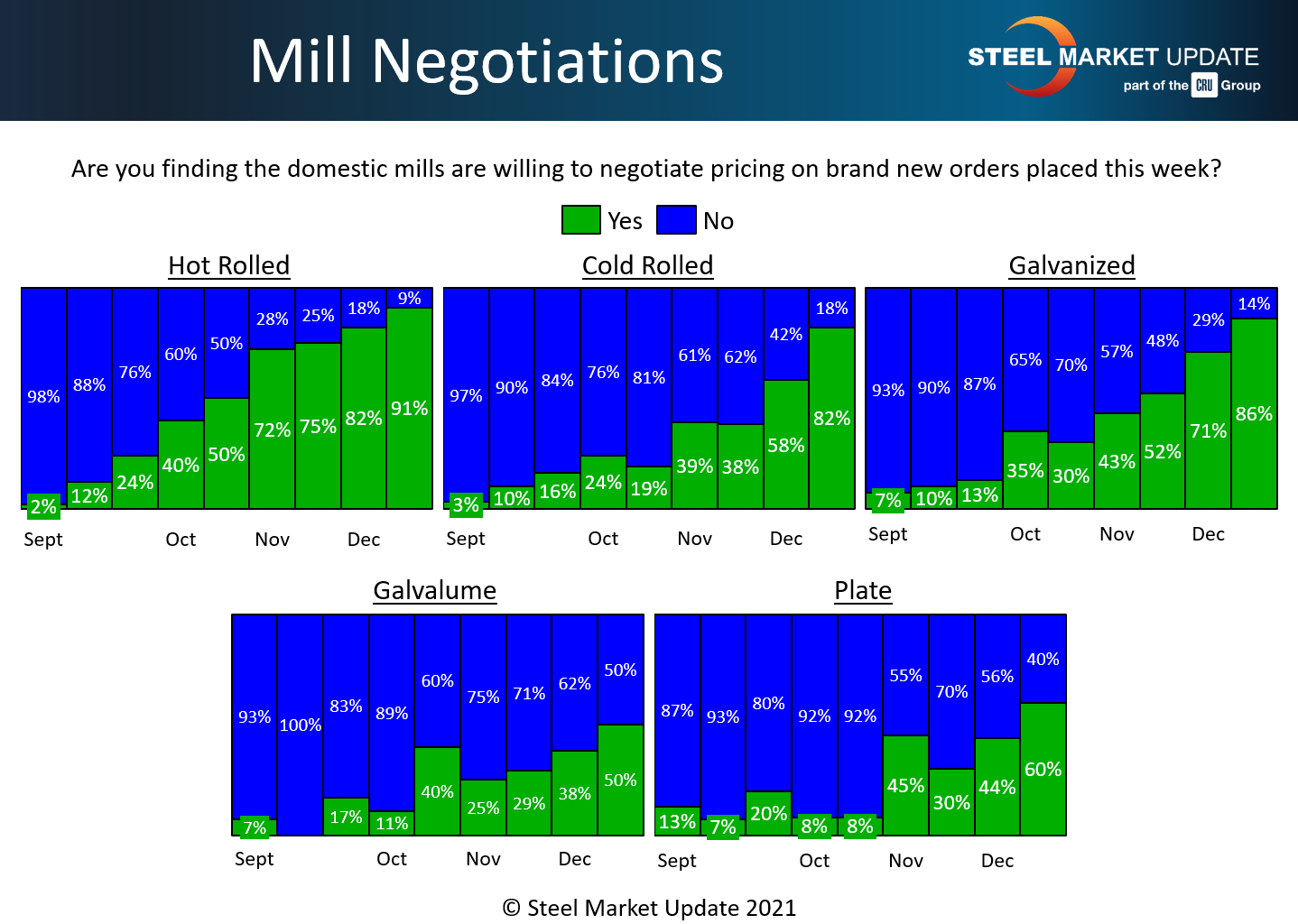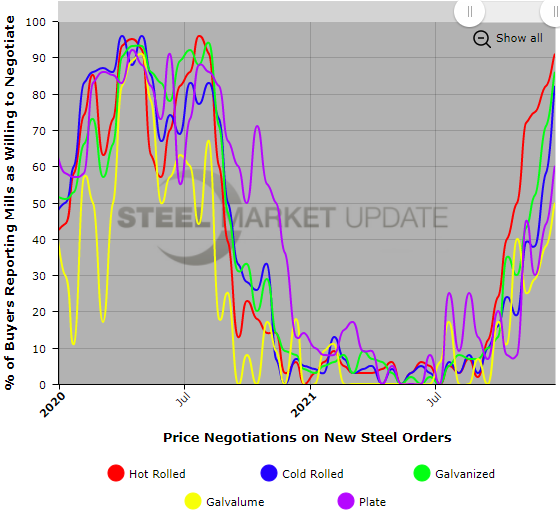SMU Data and Models

Steel Mill Negotiations: It's a Buyer's Market Once Again
Written by Tim Triplett
December 22, 2021
As the upward slope of the green bars in the charts below clearly illustrate, the bargaining position in steel price negotiations has been steadily shifting in favor of steel buyers for the past three months.
Since September 2020, it had been a seller’s market, with steel in short supply. Until lately, the mills have had little need to discount prices to secure orders. But with competition from imports on the way up and steel prices on the way down, steel has become a buyer’s market once again.
SMU asks buyers every two weeks whether mills are willing to talk price on spot orders. Most of the service center and manufacturing executives responding to SMU’s survey this week reported mills now willing to offer deals on most products. About 91% of hot rolled buyers, 86% of galvanized buyers, 82% of cold rolled buyers, 60% of plate buyers and 50% of Galvalume buyers said mills are now open to negotiating to land an order.
For most of 2021, the charts below were almost solid blue as the mills just said no to any dealmaking. If this trend continues, it appears the dominant color scheme will be green in 2022 – at least in the first quarter.


By Tim Triplett, Tim@SteelMarketUpdate.com

Tim Triplett
Read more from Tim TriplettLatest in SMU Data and Models

SMU Survey: Buyers’ Sentiment rebounds from multi-year low
Both of SMU’s Steel Buyers’ Sentiment Indices edged higher this week. Current Sentiment rebounded from a near five-year low, while Future Sentiment rose to a two-month high

SMU flat-rolled market survey results now available
SMU’s latest steel buyers market survey results are now available on our website to all premium members.

SMU Survey: Sheet lead times pull back after early-June blip, plate holds
Following the uptick seen two weeks ago, lead times eased this week for all four sheet products tracked by SMU, while plate lead times held steady, according to this week’s market survey.

SMU Survey: Pricing power abruptly shifts to steel buyers
The majority of steel buyers responding to our latest market survey say domestic mills are more willing to talk price on sheet and plate products than they were earlier this month. Sheet negotiation rates rebounded across the board compared to early June, while our plate negotiation rate hit a full 100%.

Service centers: Mill orders down marginally in May
SMU’s Mill Order Index (MOI) declined for a third straight month in May, but only marginally.
